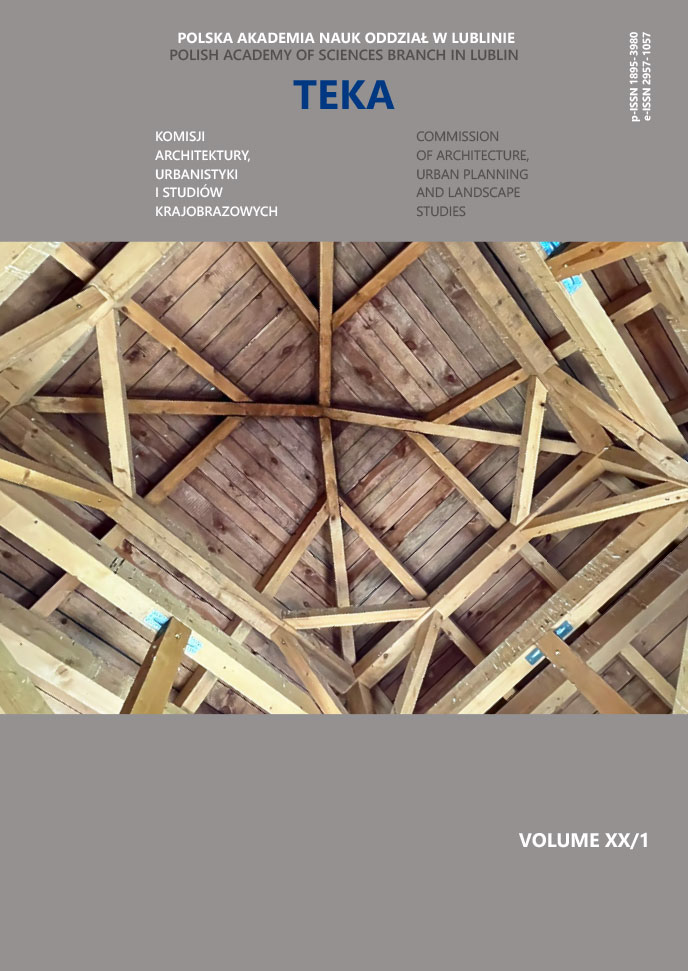GUS, “Raport zawierający wstępne wyniki NSP 2021”, stat.gov.pl. Available: https://stat.gov.pl/spisy-powszechne/nsp-2021/nsp-2021-wyniki-wstepne/raport-zawierajacy-wstepne-wyniki-nsp-2021,6,1.html [Accessed: 09 December 2024].
“Building Family-Friendly Communities | Miracle Recreation”, Available: https://www.miracle-recreation.com/blog/building-family-friendly-communities/?lang=can [Accessed: 09 December 2024].
“Inclusive by Design: Laying a Foundation for Diversity in Public Space”, Available: https://www.pps.org/article/inclusive-by-design-laying-a-foundation-for-diversity-in-public-space [Accessed: 09 December 2024].
Lilius J., “Urban space in the everyday lives of mothers and fathers on family leave in Helsinki”, European Urban and Regional Studies, vol. 24, no. 1, (Jan. 2017), pp. 104−118. https://doi.org/10.1177/0969776415619662.
DOI: https://doi.org/10.1177/0969776415619662
Mordyński K., “Muzeum, Gość i Przestrzeń Potrzeby Muzealnych Gości a Funkcje i Sposoby Kształtowania Pozaekspozycyjnej Przestrzeni Muzealnej”, Muzealnictwo, vol. 53, (2012), pp. 102−108.
Porębska A.E. et al., “Invisible barriers : excluding accessibility from the field of interest of architecture and urban planning in Poland”, Disability & Society, vol. 36, no. 6, (2021). https://doi.org/10.1080/09687599.2021.1902281.
DOI: https://doi.org/10.1080/09687599.2021.1902281
UNICEF, The state of the world’s children.: 2012. UNICEF, 2012. Available: https://digitallibrary.un.org/record/725293.
Ataol Ö. et al., “Towards inclusive urban environments for infants and toddlers: Assessing four urban neighbourhoods in Istanbul with mothers”, Children & Society, vol. 36, no. 6, (2022), pp. 1177−1193. https://doi.org/10.1111/chso.12566.
DOI: https://doi.org/10.1111/chso.12566
Hassinger-Das B. et al., “Learning Landscapes: Playing the Way to Learning and Engagement in Public Spaces”, Education Sciences, vol. 8, (May 2018). https://doi.org/10.3390/educsci8020074.
DOI: https://doi.org/10.3390/educsci8020074
“New guidelines put accessibility and inclusion at the heart of building design”, Available: https://www.architecture.com/knowledge-and-resources/knowledge-landing-page/new-guidelines-put-accessibility-and-inclusion-at-the-heart-of-building-design [Accessed: 09 December 2024].
Belausteguigoitia J., Inclusive Urbanism, Sustainable Design and Community Engagement: A Holistic Approach. 2019, p. 141. https://doi.org/10.2495/SC190121.
DOI: https://doi.org/10.2495/SC190121
Patrick M. and McKinnon I., “Co-creating Inclusive Public Spaces: Learnings from Four Global Case Studies on inclusive Cities”, The Journal of Public Space, vol. 7, no. 2, (Jun. 2022), pp. 93−116. https://doi.org/10.32891/jps.v7i2.1500.
DOI: https://doi.org/10.32891/jps.v7i2.1500
Architects H.M.C., “A Space for All Ages: Socially Inclusive Architecture at Work | Ideas”, HMC Architects. Available: https://hmcarchitects.com/news/a-space-for-all-ages-socially-inclusive-architecture-at-work-2019-07-12/ [Accessed: 09 December 2024].
Wysocki M., Dostępna przestrzeń publiczna. Samorząd równych szans. FIRR, 2009. Available: http://ngoteka.pl/handle/item/22.
“Agenda 2030 (rezolucja)”, Available: https://www.un.org.pl/agenda-2030-rezolucja [Accessed: 09 December 2024].
“Portal Gov.pl”, Gov.pl. Available: https://www.gov.pl [Accessed: 09 December 2024].
“Building Better Cities with Young Children and Families”, Van Leer Foundation.
Perez C.C., Invisible Women. 2020. Available: https://www.penguin.co.uk/books/435554/invisible-women-by-perez-caroline-criado/9781784706289.
“Children & Families”, Design Museum Denmark. Available: https://designmuseum.dk/en/besog-os/children-families/ [Accessed: 09 December 2024].



